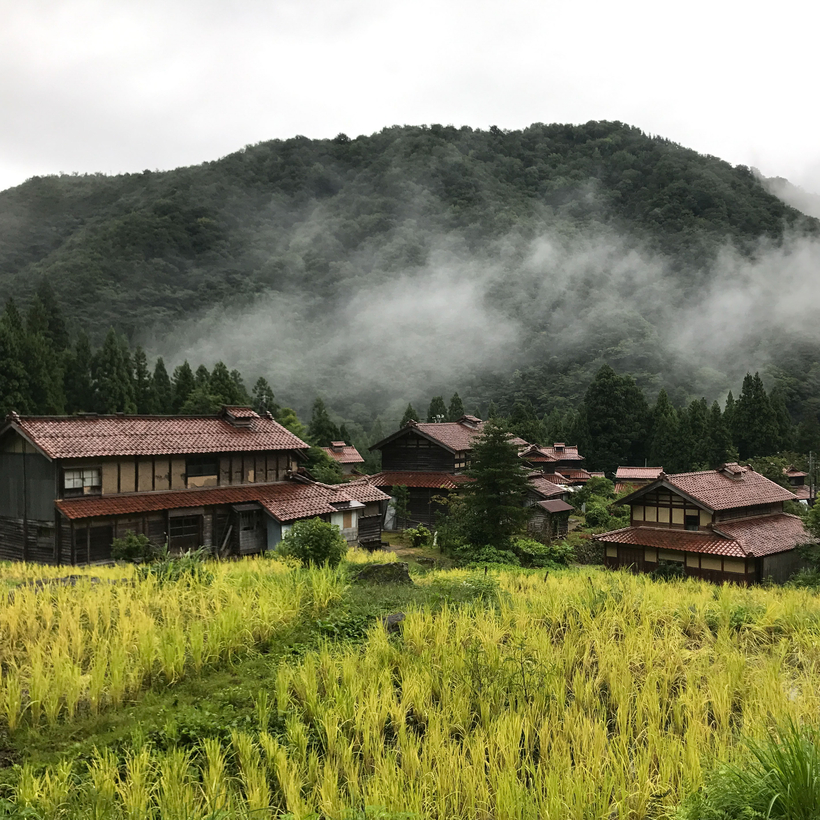Last fall, the big concern in Yamanaka—a hot-spring town in the mountains of Ishikawa, Japan—was not the coronavirus. It was bears.
One let himself into a shopping mall a few towns over. Another took a nap in my friend Nimaida-san’s persimmon tree. Every evening, an announcement over the town’s loudspeaker urged residents to gather the persimmons and chestnuts in their gardens so they wouldn’t attract the bears. It turns out the bears were hungry because of an acorn shortage.
Nimaida-san had known this was coming, because he noticed last spring when nut-producing trees didn’t flower. An energetic, cheerful man in his late 60s, Nimaida is the only year-round resident of the village outside Yamanaka where he grew up. He spends much of his time in the woods—collecting mountain vegetables, growing mushrooms, and coppicing oaks to make charcoal. He cultivates rice in terraced fields, where watercress and mint grow in the irrigation ditches fed by a mountain brook; upstream, wild wasabi grows in the shade of cypress trees and camellia.
This landscape is called “satoyama,” and—even though I grew up in the woods, too, outside Seattle—it changed the way I think about humans’ relationship with the natural world.
Symbiosis in Satoyama
In Japan, “satoyama” is a buzzword in sustainability. It means “village forest” and represents the potential for humans to positively impact an eco-system. Satoyama is a place both wild and stewarded, a resource to draw from and beautiful scenery to appreciate, a landscape invoked in folk tales and longed for in sappy songs. It was the setting of my research—and my life—while I wrote Water, Wood, and Wild Things, out now.
In Ishikawa, my wild-plants mentor, Nishiyama Sensei, explained that gathering kindling in pine forests encourages the growth of matsutake mushrooms, which in turn strengthen the pines’ resistance to pests. Coppicing oaks—or periodically cutting them back in such a way that they can regenerate from the stump—for charcoal and gathering wild vegetables keep woodlands open and bright, so berries can grow and feed birds (as well as people). Stewarded woodlands create a buffer zone between populated areas and deep woods, which can reduce encounters with zoonotic diseases and prevent uncontrollable fires such as the ones that have ravaged California.

The United Nations University Institute for the Advanced Study of Sustainability here in Ishikawa argues that satoyama practices preserve both biological and cultural diversity. Similar relationships to eco-systems exist in indigenous communities around the world.
Gathering kindling in pine forests encourages the growth of matsutake mushrooms, which in turn strengthen the pines’ resistance to pests.
But in post-Colonial America, forest is either exploited or preserved as pristine wilderness. I’m from a logging town, where the timberland giant Weyerhaeuser manages tree plantations and clear-cuts. Washington State and the U.S. Forest Service protect old-growth forests, meanwhile, where my family hikes to enjoy nature.
Satoyama is a third kind of forest. It is a complement—not an alternative—to deep, undisturbed woods (“okuyama” in Japanese), but more wild than a tree plantation or orchard.
Working with foragers, hunters, and farmers in the satoyama helped me see the possibility for active protection of our eco-systems. The notion of wilderness unchanged by humans is a myth—effects of our activity reach even the forests we do not touch directly. But our impact doesn’t have to be entirely negative.
Hannah Kirshner is a Brooklyn- and Japan-based writer. Her book, Water, Wood, and Wild Things: Learning Craft and Cultivation in a Japanese Mountain Town, is out now from Viking

